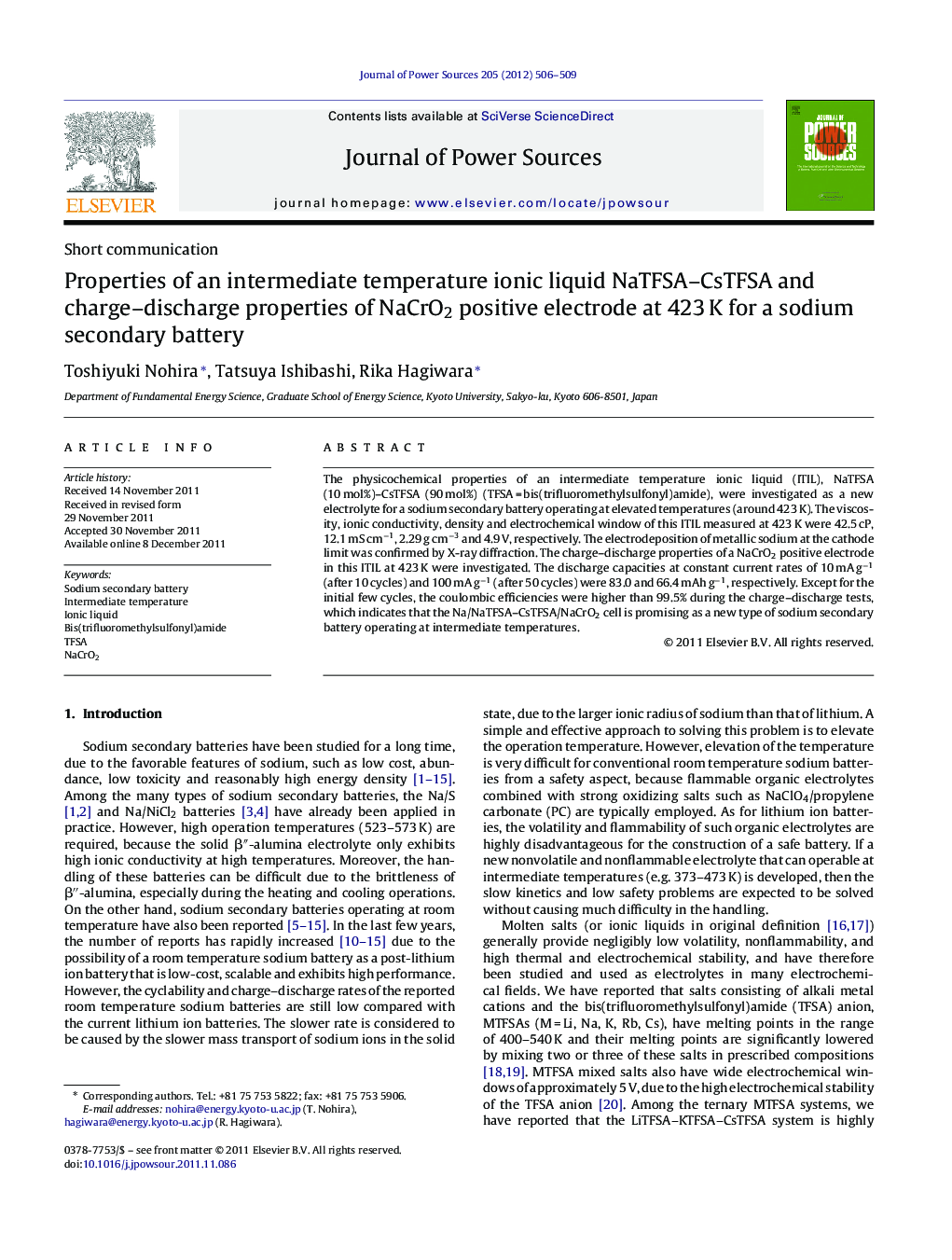| Article ID | Journal | Published Year | Pages | File Type |
|---|---|---|---|---|
| 1288177 | Journal of Power Sources | 2012 | 4 Pages |
The physicochemical properties of an intermediate temperature ionic liquid (ITIL), NaTFSA (10 mol%)–CsTFSA (90 mol%) (TFSA = bis(trifluoromethylsulfonyl)amide), were investigated as a new electrolyte for a sodium secondary battery operating at elevated temperatures (around 423 K). The viscosity, ionic conductivity, density and electrochemical window of this ITIL measured at 423 K were 42.5 cP, 12.1 mS cm−1, 2.29 g cm−3 and 4.9 V, respectively. The electrodeposition of metallic sodium at the cathode limit was confirmed by X-ray diffraction. The charge–discharge properties of a NaCrO2 positive electrode in this ITIL at 423 K were investigated. The discharge capacities at constant current rates of 10 mA g−1 (after 10 cycles) and 100 mA g−1 (after 50 cycles) were 83.0 and 66.4 mAh g−1, respectively. Except for the initial few cycles, the coulombic efficiencies were higher than 99.5% during the charge–discharge tests, which indicates that the Na/NaTFSA–CsTFSA/NaCrO2 cell is promising as a new type of sodium secondary battery operating at intermediate temperatures.
► Electrochemical window of NaTFSA (10 mol%)–CsTFSA (90 mol%) is as wide as 4.9 V at 423 K. ► Ionic conductivity of NaTFSA (10 mol%)–CsTFSA (90 mol%) is 12.1 mS cm−1 at 423 K. ► The discharge capacity of NaCrO2 positive electrode at 10 mA g−1 was 83.0 mAh g−1 at 423 K. ► The coulombic efficiency was higher than 99.5%. ► The Na/NaTFSA–CsTFSA/NaCrO2 cell is promising as a new sodium secondary battery.
